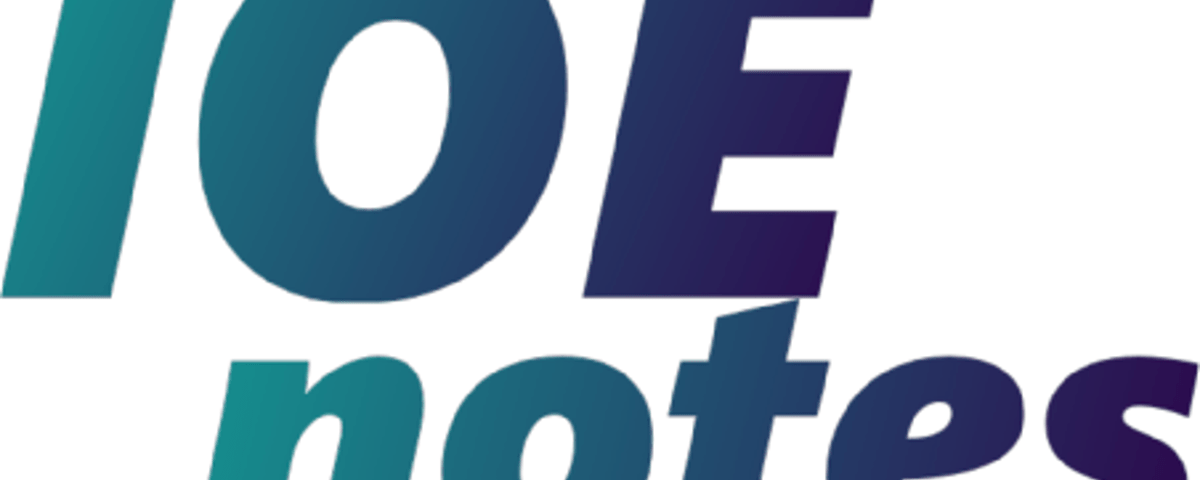INSTRUMENTATION I
EE 552
Lecture : 3 Year : II
Tutorial : 1 Part : II
Practical : 3/2
Course Objectives:
Comprehensive treatment of methods and instrument for a wide range of measurement problems.
1. Instrumentations Systems (2 hours)
1.1 Functions of components of instrumentation system introduction, signal processing , Signal transmission ,output indication
1.2 Need for electrical, electronics, pneumatic and hydraulic working media systems and conversion devices
1.3 Analog and digital systems
2. Theory of measurement (10 hours)
2.1 Static performance parameters ‐ accuracy, precision, sensitivity, resolution and linearity
2.2 Dynamic performance parameters ‐ response time, frequency response and bandwidth
2.3 Error in measurement
2.4 Statistical analysis of error in measurement
2.5 Measurement of voltage & current (moving coil & moving iron instruments)
2.6 Measurement of low, high & medium resistances
2.7 AC bridge & measurement of inductance and capacitance
3. Transducer (8 hours)
3.1 Introduction
3.2 Classification
3.3 Application
3.3.1 Measurement of mechanical variables, displacement, strain. velocity. acceleration and vibration
3.3.2 Measurement of process variables ‐ temperature pressure, level, fluid flow, chemical constituents in gases or liquids, pH and humidity.
3.3.3 Measurement of bio‐physical variables blood pressure and
myoelectric potentials
4. Electrical Signal Processing and transmission (6 hours)
4.1 Basic Op‐amp characteristics
4.2 Instrumentation amplifier
4.3 Signal amplification, attenuation, integration, differentiation, network isolation, wave shaping
4.4 Effect of noise, analog filtering, digital filtering
4.5 Optical communication, fibre optics, electro‐optic conversion devices
5. Analog ‐ Digital and Digital ‐ Analog Conversion (6 hours)
5.1 Analog signal and digital signal
5.2 Digital to analog convertors ‐ weighted resistor type, R‐2R ladder type, DAC Errors
5.3 Analog to digital convertors ‐ successive approximation type, ramp type, dual ramp type, flash type, ADC errors
6. Digital Instrumentation (5 hours)
6.1 Sample data system, sample and hold circuit
6.2 Components of data acquisition system
6.3 Interfacing to the computer
7. Electrical equipment (8 hours)
7.1 Wattmeter
7.1.1 Types
7.1.2 Working principles
7.2 Energy meter
7.2.1 Types
7.2.2 Working principles
7.3 Frequency meter
7.3.1 Types
7.3.2 Working principles
7.4 Power factor meter
7.5 Instrument transformers
Practical:
1. Accuracy test in analog meters
2. Operational Amplifiers in Circuits
– Use of Op amp as a summer, inverter, integrator and differentiator
3. Use resistive, inductive and capacitive transducers to measure displacement
– Use strain gauge transducers to measure force
4. Study of Various transducers for measurement of Angular displacement, Angular Velocity, Pressure and Flow
– Use optical, Hall effect and inductive transducer to measure
angular displacement
– Use tacho ‐ generator to measure angular velocity
– Use RTD transducers to measure pressure and flow
5. Digital to Analog Conversion
– Perform static testing of D/A converter
6. Analog to Digital Conversion
– Perform static testing of A/D converter
References:
1. D.M Considine “Process Instruments and Controls Handbook” third
edition McGraw Hill, 1985
2. S. Wolf and R.F.M. Smith “Students Reference Manual for Electronics
Instrumentation Laboratories”, Prentice Hall, 1990
3. E.O Deobelin “Measurement System, Application and Design” McGraw
Hill, 1990
4. A.K Sawhney “A Course in Electronic Measurement and Instrumentation
” Dhanpat Rai and Sons,1988
5. C.S. Rangan, G.R Sharma and V.S.V. Mani, “Instrumentation Devices and
Systems” Tata McGraw Hill publishing Company Limited New
Delhi,1992.
6. J.B. Gupta. “A Course in Electrical & Electronics Measurement &
Instrumentation, thirteenth edition, 2008, Kataria & Sons.
Evaluation Scheme:
The questions will cover all the chapters of the syllabus. The evaluation scheme
will be as indicated in the table below:
Chapters Hours Marks distribution*
1 2 6
2 10 16
3 8 16
4 6 10
5 6 10
6 5 10
7 8 12
Total 45 80
* There could be a minor deviation in the marks distribution.
img src : http://www.instrulogic.com/



1 Comment
woul u send me notes